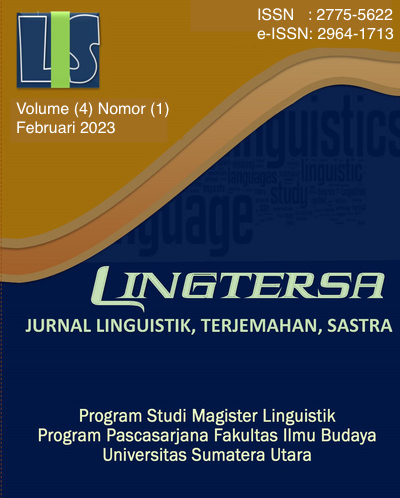THE MEANING OF TRADITIONAL FOOD “BUBUR PEDAS†IN LANGKAT MALAY
DOI:
https://doi.org/10.32734/lingtersa.v4i1.11207Keywords:
Meaning Components, Field of Meaning, Langkat Malay, SemanticsAbstract
This study specifically discussed the field of meaning in spicy porridge Malay cuisine. The purpose of this study was to describe the components of importance, type of meaning, and semantic function in traditional foods of Malay spicy porridge in the city of Stabat. The method used is qualitative. The data source comes from interviews with informants, namely the indigenous Malay in Stabat City. The data collection method is carried out by interview. Data analysis methods are carried out by the Padan method and with PUP techniques. Based on the results of the analysis it is known that the definition of lexeme materials, how to cook, and tools on spicy porridge can be done using the analysis of components of meaning. Through the analysis of the meaning, a component can be seen in the difference between one lexeme and another lexeme on a concrete basis. The meaning component in spicy porridge cuisine has 59 lexicons consisting of 46 lexicons of ingredients, 5 lexicons of how to cook, and 8 lexicons of tools. The component of meaning is then formed by 12 lexemes namely, tubers lexemes, nuts, fruits, spices, wet spices, flash, leaves, cutting, cooking, metal, stones, and wood.
Downloads
Downloads
Published
How to Cite
Issue
Section
License
Copyright (c) 2023 Linguistik, Terjemahan, Sastra (LINGTERSA)

This work is licensed under a Creative Commons Attribution-ShareAlike 4.0 International License.









